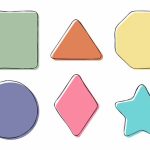Okay time for a rather unpopular opinion!
We think grammar is really fun. Grammar is like the rational part of a language. The science behind it. And we think that once you understand the metaphorical ‘2+2’ of grammar so to speak, you get into a place where you become a pro of a language. And that applies to any language. Including English. And anyone learning that language. Including your kids.
As long as their grammar is sound, you will not have to worry about schooling and scolding them at home.
So to help you and your child get there, we thought today we will tell you all about definite and indefinite articles. What they are, what they do, how to use them – the works. No holds barred.
Let us begin with ‘what is an article?’
Basics out of the way first always!
So in grammar, article is a word that you will find adjacent to a noun (just before it in fact) whose job is to tell you whether that noun is a specific noun or a generic one. It applies to noun phrases. Just think of it as an identification tool. That should make it easier to remember what an article really does when it comes to grammar.
Now let us talk about the definition of a definite article.
That was a bit of a tongue-twister right there!
Moving on rather quickly here, a definite article is all about the specifics. When this one appears before a noun, you get to clearly know that the noun being referred to is specific, something that has been alluded to before or previously identified in the flow of sentences.
There is only one single definite article in the English language. Can you guess what it is?
It is the word ‘the’.
We will get definite and indefinite article examples too. But first…
How about we find out what an indefinite article is?
An indefinite article, as you may have guessed by the process of elimination, is that article which denotes the noun it has been used in front of is generic, not specific. This determiner is used in language to introduce something new. Be it an object, an idea or everything in between.
Now there are double the number of indefinite articles than there are definite articles. Which is to say there are two indefinite articles.
These are the words ‘a’ and ‘an’.
And there are certain rules to using each of them.
- When using ‘a’: Make sure that you use this indefinite article only in front of nouns that begin with a consonant sound. For example, ‘a chair’.
- When using ‘an’: Before you place it in front of a noun, make sure that the word starts with a vowel or a vowel sound. For example, ‘an apple’, or ‘an honour’.
Now let us get to definite and indefinite articles examples.
If you read carefully, you will find a bunch of different use cases of definite and indefinite articles peppered throughout what we have written so far. After all, articles like ‘the’, ‘a’, and ‘an’ find their way into almost all of the sentences we speak or write. They are almost vital to impeccable sentence construction!
But do not worry. You do not have to rewind and scan this article to find all of those instances. We have a few of them here for you, which you can read to get a hang of the difference between definite and indefinite articles.
First up, sentences with definite articles:
- The crow perched on my window began tapping its beak on the glass.
- We used the spotted red coloured ball to play with.
- I needed the book she had borrowed from the library yesterday.
Now let us get into sentences that use indefinite articles:
- A cat purred softly in the corner by itself.
- An egg landed straight on the road from the window above.
- Can you hand me a pair of scissors?
So in the first sentence ‘a cat’ denotes any cat. It is basically a cat the writer does not know so they refer them to as ‘a’ cat. Not specific. The same thing happens with the egg. It was a completely random egg. And then the same rule applies to the third sentence as well. It could be any scissors. The blue one. The green one. The yellow one. Since nothing specific was pointed out, ‘a pair of scissors’ suffices.
Okay, something to note now: the use of definite and indefinite articles can arise within the same paragraph to refer to the same thing.
Confused? What we are trying to say is that a noun’s state can change from a generalised to a specific one within the course of a few sentences. A change that will be denoted by the use of the article before it. Here is an example of this grammatical rule.
“A cat purred softly in the corner. She was playing with a battered ball alone. Yet she looked content. I looked at the cat for a while, admiring her knack to find joy in the simpler things in life.”
See how we went from ‘a’ cat to ‘the’ cat. In the course of the sentences, the writer went from introducing the cat to establishing it as the subject of their writing. Hence, the article changed from indefinite to definite; to denote that the very same cat is being talked about.
This example too should clear up the difference between definite and indefinite articles as you can see the context in which both have been used. After all, the only key difference between them is that one is used for specific things and the other for general things. And to be fair, their names give that away.
The rules of grammar might seem like a lot to process, learn and use but they are actually quite simple when you break them down like we did. Plus, you know the golden rule. The younger you start learning grammar rules, the easier and less complicated it seems! We firmly believe all preschools should start introducing the concept of grammar in small ways, like we do at EuroKids. We are all about making learning language, literature and grammar super fun! Visit us to know more.















